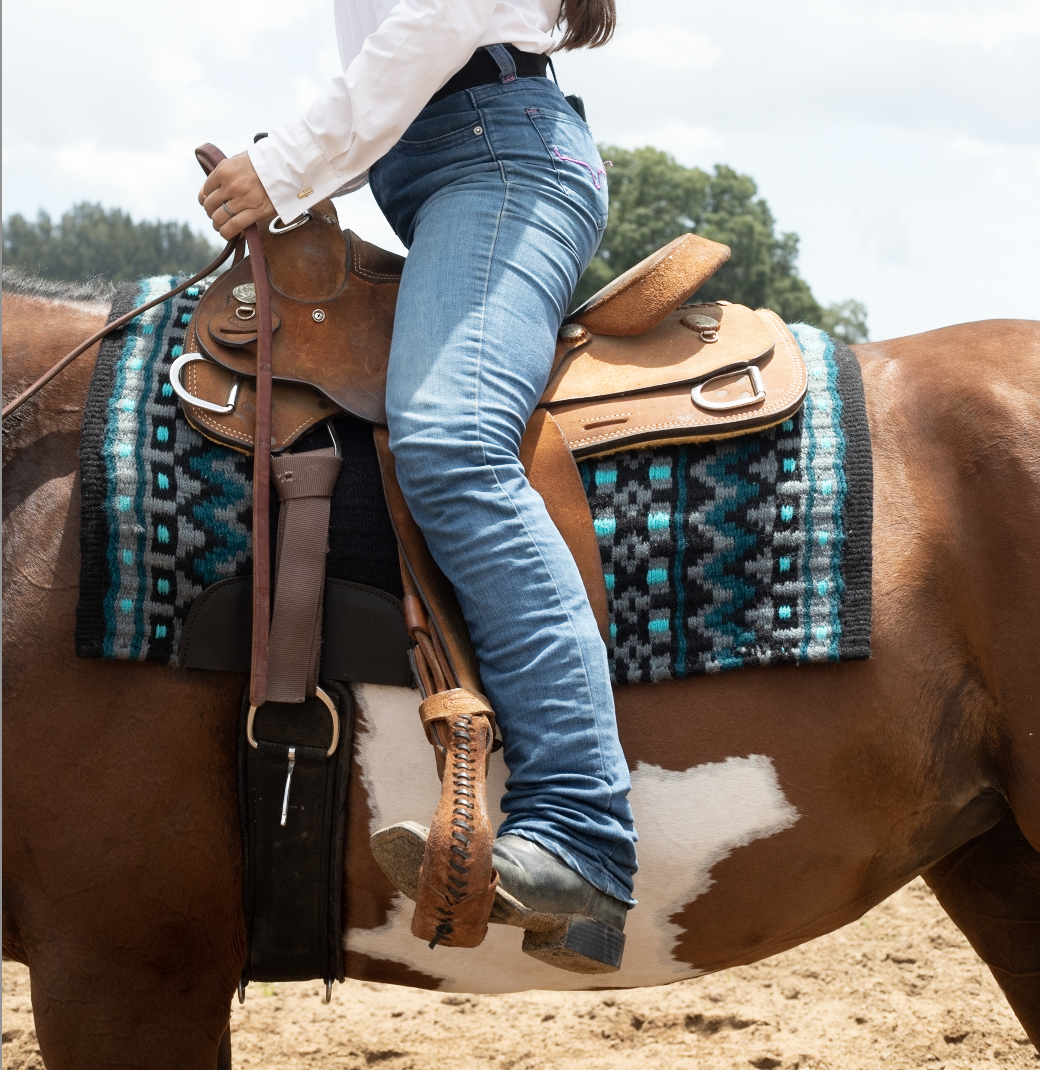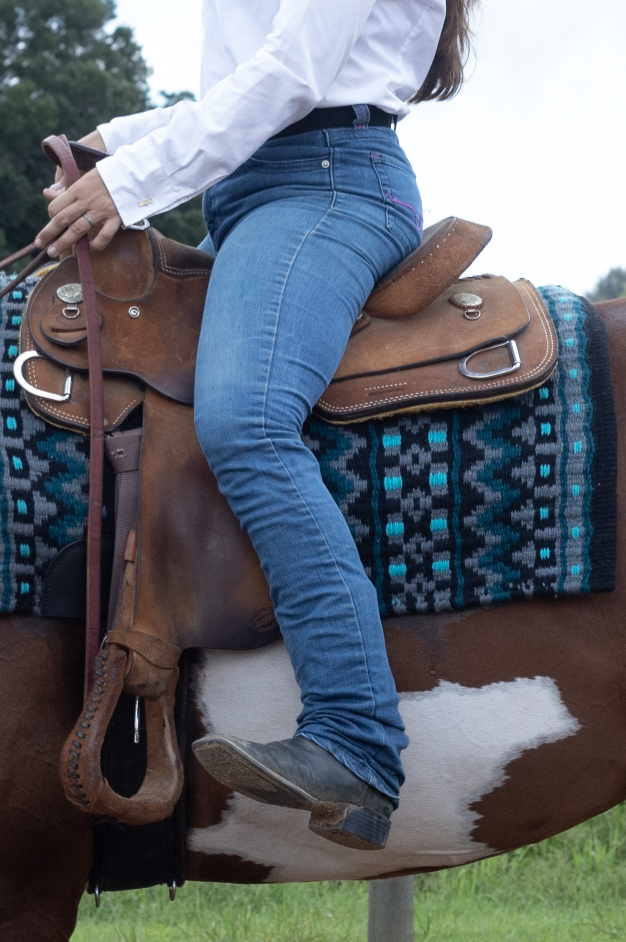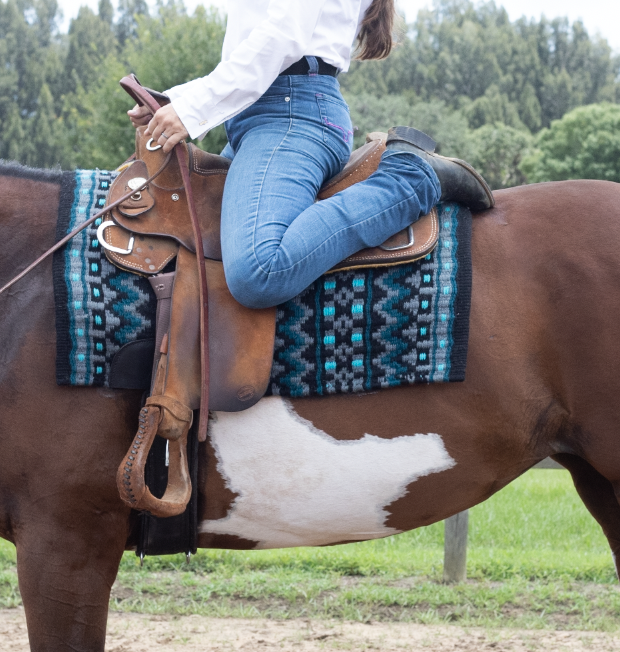One of the most important factors to having great horsemanship is your lower leg position. Ideally, you want your leg to be pulled back under your hip and straight underneath you. This allows you to use your leg effectively and be balanced in the saddle.
Horsemanship isn’t just about putting your heels down and sitting pretty on your horse. These are three drills that collegiate coach and APHA Professional Horsemen Avery Sinclair says you should add to your riding routine to improve your lower leg.
1. Stand in your stirrups.
How: While sitting on your horse in proper horsemanship position, put all of the weight in your heels and stand up out of your seat about 2 inches. Use your core and thighs to hold this stance rather than squeezing your knees which will inevitably cause your legs to bend and inch up. It’s best to start this exercise while your horse is stopped and standing. You can eventually increase the difficulty by performing the exercise at a walk, jog, and lope.
Why: This will help strengthen and lengthen the muscles needed to keep your leg in the proper horsemanship position. It will also help you find the correct spot for your leg in the saddle. If you stand up and fall forward, your leg is too far forward you will tip forward in the saddle. But if your leg is too far back, you will fall backward back into the saddle. If you stand up and you are balanced and able to hold the correct upper body position, your legs are where they should be.
Learn More: 3 Drills to Instantly Boost Your Horsemanship Score

2. Drop those stirrups.
How: Once you feel balanced in the saddle and are confident with your lower leg position, drop your stirrups. Continue to keep your leg in the same spot. Pretend like you are still able to press your weight into the stirrups and push your heels down. This exercise is also safest to start while your horse is standing. Eventually work your way up to the walk, jog, and lope.

Why: If you are constantly relying on your stirrups to keep your leg in the correct position, you aren’t truly pushing yourself to where you and your leg muscles are doing all of the work. The goal is for your leg position to become muscle memory so no matter how bumpy or fast the horse is moving, your leg will stay strong. Think of it as taking the training wheels off. Stirrups are a great aid to have, but you should be able to have the same leg position once they are taken away.
Increase the difficulty: Once you master these two drills, try combining them to increase the stakes! Drop your stirrups and stand up. See how long you can hold this and maybe even try it at the walk or jog.
Learn More: Horse&Rider OnDemand
3. Sit in the W position.
How: This drill isn’t as common as the two listed above, but it is very useful. While sitting on your horse, bring both feet up to the back of your saddle, and get your heels as close to each other as possible. You will feel muscles you didn’t even know you had stretch, but that means it’s working! Hold this position for as long as it is comfortable and increase the length of time every time you practice this exercise.

Why: The purpose of this exercise is to open your hips and stretch your muscles so you are able to keep your leg under your hip. Your hip muscles can become tight which will make it difficult to bring your leg back where it is supposed to be while sitting in the saddle. Before you know it you will find this stretch to feel good rather than uncomfortable as your muscles become more and more stretched out. You might even start doing it every time you ride!
Note: Before attempting any of these positions, make sure your horse is comfortable with you sitting in different positions and moving your legs over their back.






